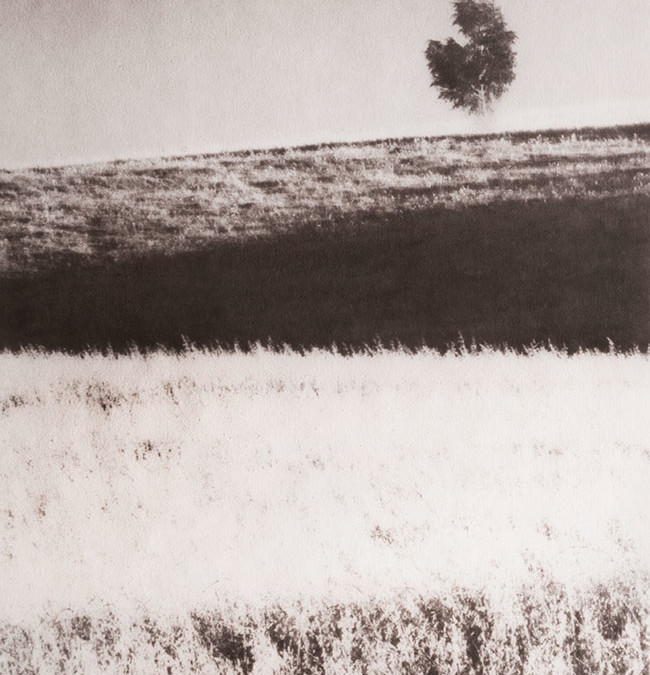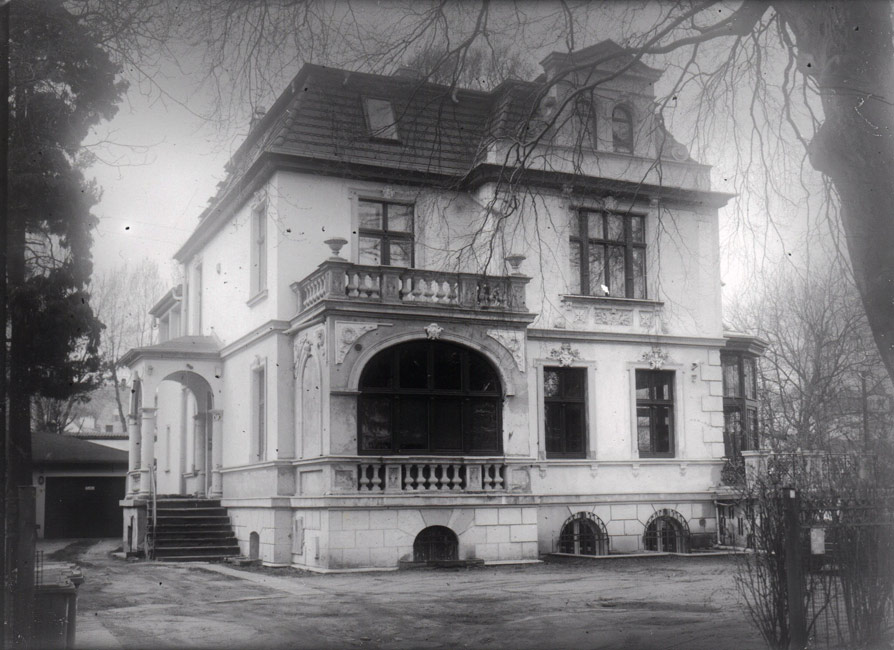 The 19th century was undoubtedly the most stormy and dynamic age in the history of photography. It was not just the century when photography was invented but above all the time when nearly all the photochemical processes ever used in photography were invented. It was the period during which photography covered the unimaginable distance from the daguerreotype developed in mercury vapours and the paper negative to the silver gelatine photographic film on elastic substrates and the first roll films. In the first few decades of photography, countless materials including not only silver but also iron, chromium or….. bitumen of Judea were tested in the search for the best materials and technologies to . Even though photographs were successfully made with the use of each of the above and processes such as the cyanotype, the platinotype, the oilprint, gum bichromate or carbon transfer enjoyed a considerable career and are used by artists till this day, it was silver that proved the absolute winner and its salts have been used in all of the most popular photographic processes not only of those days but also of the twentieth century when the dominance of silver based photography became absolute. This is why the longest and most intensive workshop I offer is devoted to photographic processes using silver. During the six days three participants will have a one of time opportunity not only to observe the development of photography from the talbotype until the development of photographic emulsions but will, above all, have an opportunity to gain an in depth understanding of all the leading processes of that time as well as to...
The 19th century was undoubtedly the most stormy and dynamic age in the history of photography. It was not just the century when photography was invented but above all the time when nearly all the photochemical processes ever used in photography were invented. It was the period during which photography covered the unimaginable distance from the daguerreotype developed in mercury vapours and the paper negative to the silver gelatine photographic film on elastic substrates and the first roll films. In the first few decades of photography, countless materials including not only silver but also iron, chromium or….. bitumen of Judea were tested in the search for the best materials and technologies to . Even though photographs were successfully made with the use of each of the above and processes such as the cyanotype, the platinotype, the oilprint, gum bichromate or carbon transfer enjoyed a considerable career and are used by artists till this day, it was silver that proved the absolute winner and its salts have been used in all of the most popular photographic processes not only of those days but also of the twentieth century when the dominance of silver based photography became absolute. This is why the longest and most intensive workshop I offer is devoted to photographic processes using silver. During the six days three participants will have a one of time opportunity not only to observe the development of photography from the talbotype until the development of photographic emulsions but will, above all, have an opportunity to gain an in depth understanding of all the leading processes of that time as well as to...
 Many photographes feel really nostalgic about the chloride papers that were still manufactured in the late 1990’s. Despite their low speed that require contact printing, they offered unrivalled image quality. Quality so perfect that, even though they disappeared from the market back in 1990’s, we still keep getting asked about their availability. Others are equally nostalgic about the POP (print out papers) materials. And even though these papers stayed in manufacture for a long time, in the US until the early days of the 21st century, they too eventually disappeared from the market. Fortunately, at least the last type is probably the easiest photographic emulsion to make and even those of us who don’t have considerable experience and a professionally equipped lab can make them on their own. Though working in a home darkroom we might find competing with factory made materials difficult (if this is our aim of course), still the materials we make under such conditions will enable us to get magical results And even making photographic papers only marginally different than the factory made ones will prove possible with minimal experience. For everyone interested in this magical process we have prepared a workshop that will enable you to discover the secrets of preparing and using chloride POP emulsions both in their gelatin and collodion versions. The programme of the workshop includes: preparing a silver gelatine chloride POP emulsion learning the basics of emulsion making at the same time, preparing a collodio-chloride POP emulsion, learning different methods of coating emulsion on paper and similar substrata, learning to process POP papers including their toning, learning the most important...
Many photographes feel really nostalgic about the chloride papers that were still manufactured in the late 1990’s. Despite their low speed that require contact printing, they offered unrivalled image quality. Quality so perfect that, even though they disappeared from the market back in 1990’s, we still keep getting asked about their availability. Others are equally nostalgic about the POP (print out papers) materials. And even though these papers stayed in manufacture for a long time, in the US until the early days of the 21st century, they too eventually disappeared from the market. Fortunately, at least the last type is probably the easiest photographic emulsion to make and even those of us who don’t have considerable experience and a professionally equipped lab can make them on their own. Though working in a home darkroom we might find competing with factory made materials difficult (if this is our aim of course), still the materials we make under such conditions will enable us to get magical results And even making photographic papers only marginally different than the factory made ones will prove possible with minimal experience. For everyone interested in this magical process we have prepared a workshop that will enable you to discover the secrets of preparing and using chloride POP emulsions both in their gelatin and collodion versions. The programme of the workshop includes: preparing a silver gelatine chloride POP emulsion learning the basics of emulsion making at the same time, preparing a collodio-chloride POP emulsion, learning different methods of coating emulsion on paper and similar substrata, learning to process POP papers including their toning, learning the most important...
 Silver gelatin dryplate, which was the real beginning of the silver based photography as we know it, is probably one of the most difficult challenges that a person passionate about historical processes can face. In order to make our own glass plate negatives we have to overcome a large number of difficulties; starting with obtaining appropriate materials, through the making the emulsion itself to the final coating of the negative and processing the exposed plates so as to make the best use of their speed without damaging the delicate layer of gelatin emulsion. Despite all these difficulties, making your own negatives is the only way if we want to recreate the appearance of the photographs from the turn of the 19th and 20th centuries; pictures recorded on glass plates coated with a thick layer of emulsion, emulsion which disperses light very different than modern negatives. Such negatives lack a lot of advantages of the modern materials, are colour blind or orthochromatic. At the same time they imbue the image with a magical quality unavailable to modern products. During the intensive, four day workshop, participants will acquire all the skills necessary to make their own emulsions and glass plate negatives. They will: learn about available materials for home emulsion making, learn to use the emulsion making equipment, learn about the basic processes taking place during the emulsion making as well as the importance of each stage for the resulting product, make a colour blind negative emulsion using modern photographic gelatins. learn to adapt pre-war recipes for use with modern materials. learn to control the speed and fogging of resulting materials,...
Silver gelatin dryplate, which was the real beginning of the silver based photography as we know it, is probably one of the most difficult challenges that a person passionate about historical processes can face. In order to make our own glass plate negatives we have to overcome a large number of difficulties; starting with obtaining appropriate materials, through the making the emulsion itself to the final coating of the negative and processing the exposed plates so as to make the best use of their speed without damaging the delicate layer of gelatin emulsion. Despite all these difficulties, making your own negatives is the only way if we want to recreate the appearance of the photographs from the turn of the 19th and 20th centuries; pictures recorded on glass plates coated with a thick layer of emulsion, emulsion which disperses light very different than modern negatives. Such negatives lack a lot of advantages of the modern materials, are colour blind or orthochromatic. At the same time they imbue the image with a magical quality unavailable to modern products. During the intensive, four day workshop, participants will acquire all the skills necessary to make their own emulsions and glass plate negatives. They will: learn about available materials for home emulsion making, learn to use the emulsion making equipment, learn about the basic processes taking place during the emulsion making as well as the importance of each stage for the resulting product, make a colour blind negative emulsion using modern photographic gelatins. learn to adapt pre-war recipes for use with modern materials. learn to control the speed and fogging of resulting materials,...





Recent Comments